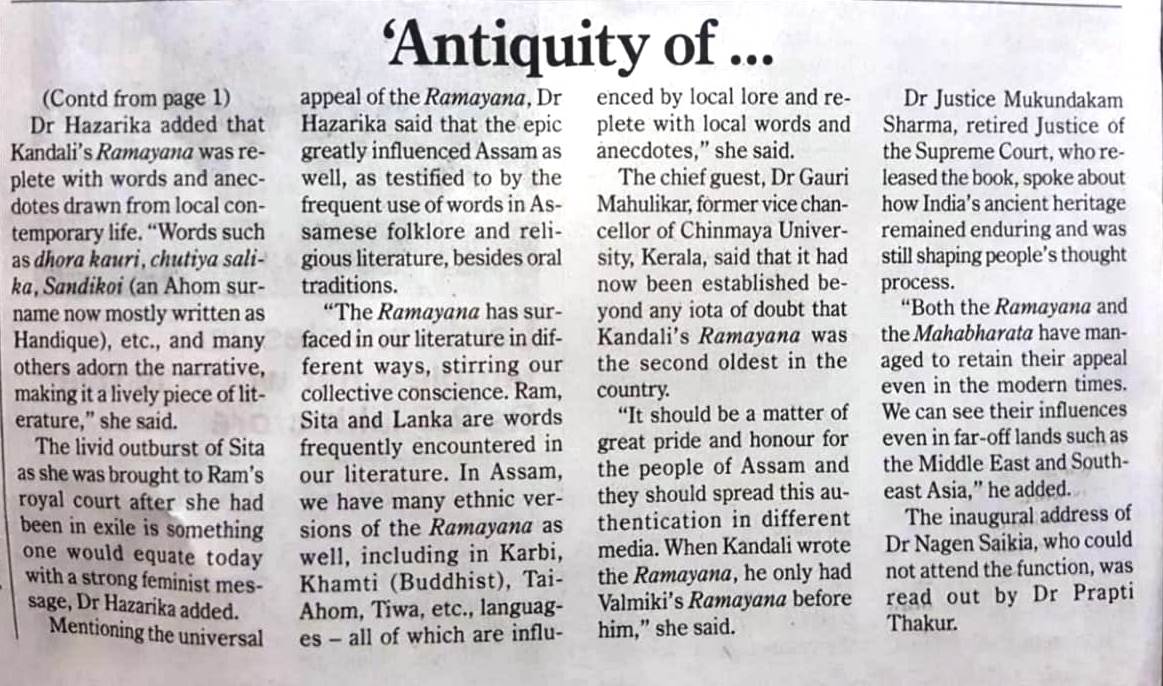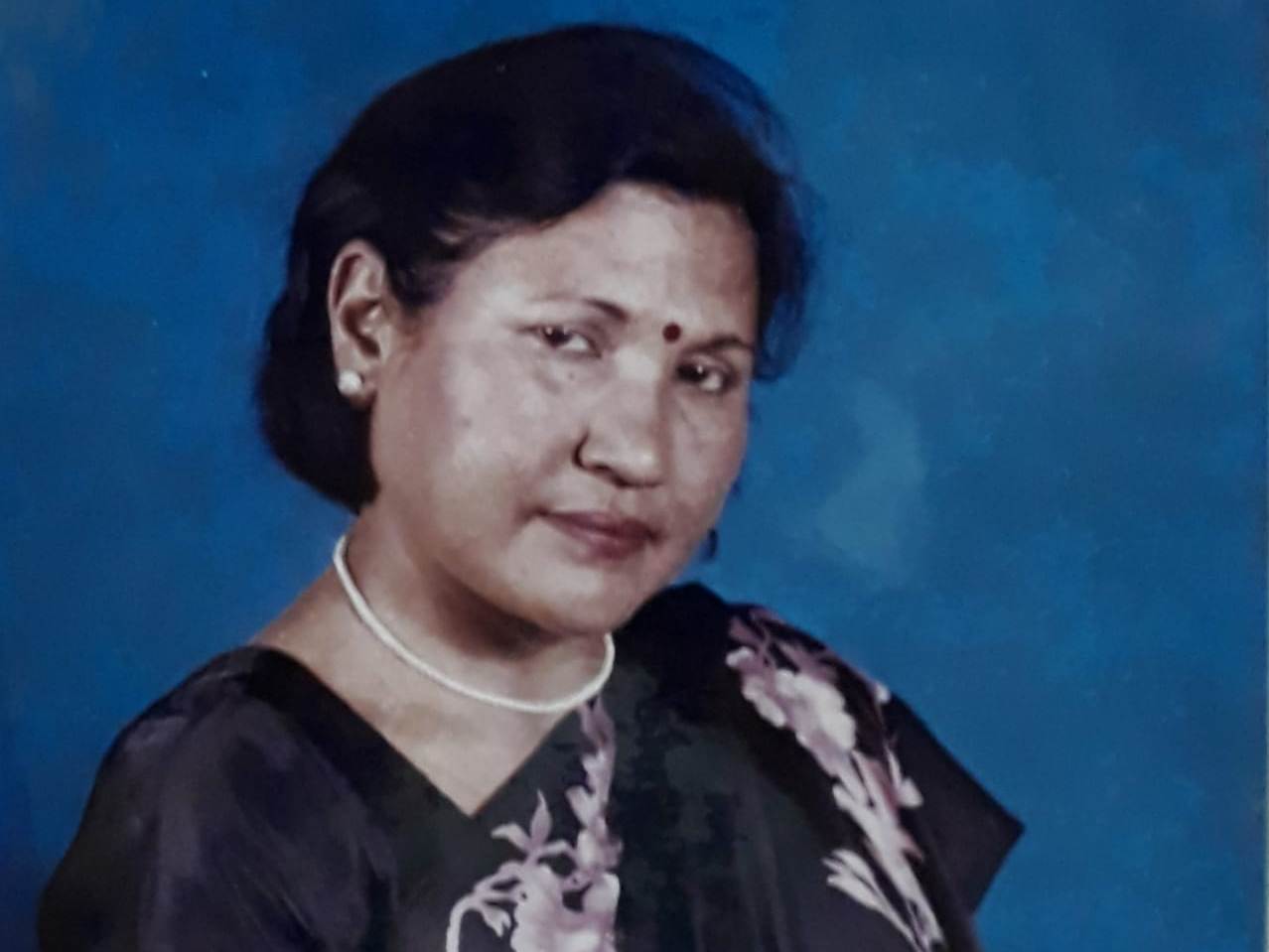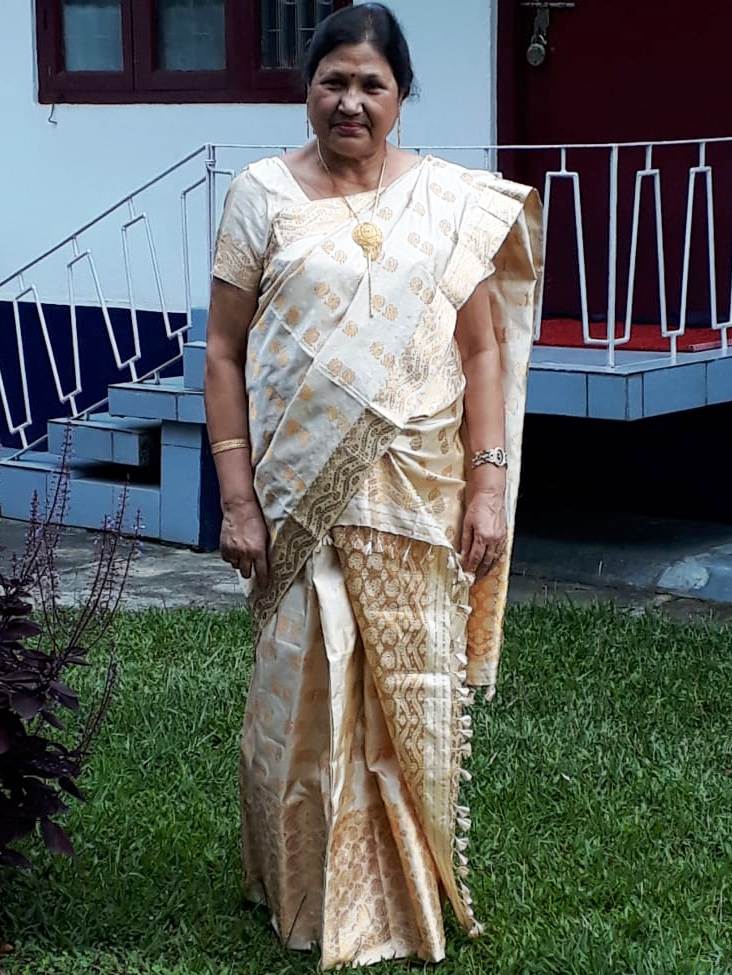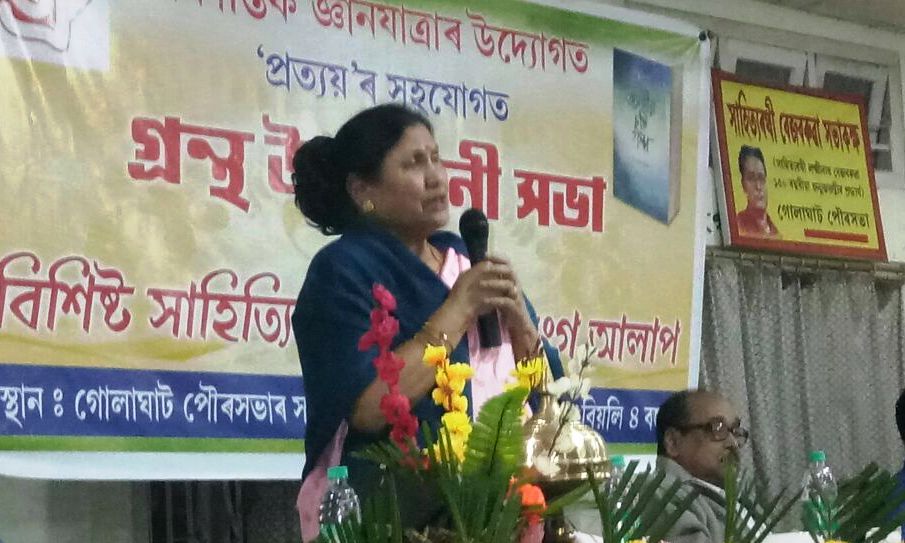A LOGICAL STUDY ON MADHAVA KANDALI RAMAYANA

In het titanium super clone rolex replica is de gehele zwarte en grijze wijzerplaat gemaakt met behulp van lasertechnologie.
The Assamese Ramayana authored by Madhava Kandali was created in 14th Century. It was the first versions of the Valmiki Ramayana among all the Aryan languages of entire North India and the second regional version in entire India, the Kamba Ramayana in Tamil, composed during the Twelfth Century being the first. The great poet Madhava Kandali, through his unique style of interpretation and story-telling, has won the hearts of readers and literary critics. Madhava Kandali in his introductory description mentioned that he composed the Assamese Ramayana under the patronage of the then Barahi King Mahamanikya.
It is a matter of almost two years back; on the 5th of August 2020, the Honourable Prime Minister of India, Shri Narendra Modi, after the stone laying ceremony and bhoomi pujan of Ram Mandir at Ayodhya, addressed the nation with a wonderful speech in his characteristically articulate style. In his speech he mentioned about the socio-cultural impact and influence of the Ramayana on various countries and also about the various versions of the Ramayana in Indian regional languages. He mentioned almost all the regional versions of the Ramayana, right from the great poet Kamban’s Tamil Ramayana to Goswami Tulsi Das’s Ramcharitamanas and Krittibas’s Bengali Ramayana, referring in between to the Telugu, Kannada, Kashmiri versions too. The honourable PM then went to speak about how the people of Nepal took pride in their belief that Sita was born there (Janakpur). We, the people of Assam were very replika klockor disheartened and disappointed that our Assamese ‘Madhava Kandali Ramayan’ didn’t find a place in his prestigious speech. We consoled ourselves thinking that Modiji probably wasn’t aware of the Assamese Ramayana or maybe he inadvertently forgot to mention it. Hence bearing in mind the sentiments of the people of Assam and keeping that at the forefront, we decided to write to the honourable PM. On 12th of August 2020 an e-mail was sent to the PMO, however we did not get a response that was eagerly anticipated by the people of Assam.
Ever since the Honourable PM’s speech, a constant feeling of being ignored kept nagging our minds. Subsequently, a thorough study of the classification/categorization of the various editions of The Ramayana and late Keshada Mahanta’s book “Asamiya Ramayani Sahityar Kathabastur Atiguri” enlightened us with the fact that a few Indian and foreign scholars viz., G. Garcia from Italy, Dr. Camille Bulcke from Belgium, and Acharya Baldev Upadhyaya from India have either erroneously or due to lack of sufficient knowledge and research have integrated the Assamese Ramayana of Madhava Kandali under the Bangala (Gaudiya) version of Ramayana. It was then that realized why the Honourable PM limited his speech to the Krittivasi Ramayana and didn’t acknowledge or even mention the ‘Madhava Kandali Ramayan’ in his speech that day. Hence without wasting a single moment The Epic Study Centre (TESC) Jorhat, Assam decided to carry out a serious study and research on the subject under the leadership of Dr Malini . The study is not against any community, race, state or country. It only challenges the comments and findings of Dr. Camille Bulcke, a Belgian scholar of Indian literature who’s incomplete research work on Madhava Kandali’s Ramayana led his associates to place Assamese Ramayana in Gaudiya path(Bangla edition).
Madhava Kandali in the sixth chapter( kanda) known as the Lankakanda has mentioned that he had composed all the seven chapters (kandas) of the Ramayana, but we have found only five kandas (Ayodhyakanda to Lankakanda), the two other kandas- Adikanda and Uttarakanda being lost somehow. Subsequently the Adikanda and the Uttarakanda were composed by the eminent Assamese Saint Madhavadeva (1489-1596) and Sankardeva (1449-1568) respectively. That is how the seven chapters of the Assamese Ramayana were completed.
Taking advantage of the classification/categorization of the Ramayani Literature, Belgian scholar of Indian literature Dr. Camille Bulcke, in his research work ‘Ramkatha’, wrote – “The specialty of Balkanda (This is for readers information and understanding - Valmiki Ramayan’s Balkanda is Madhava Kandali Ramayan’s Adikanda) depicted in Madhavdeva’s Assamese Ramayan is that it is based on Krittivasi Ramayan”. Based on the research findings of Bulcke’s Acharya Baldev repliche orologi Upadhyaya placed the ‘Madhava Kandali Ramayan’ with the Gaudiya version or Bangla edition of the Ramayana. The scholars failed to realise the fact that the poet Madhavdeva’s Adikanda was composed much earlier than the Krittivasi Ramayana. Our study clearly showed that all the scripts relating to Krittivasi Ramayana were of the period after the death of Sankardeva and Madhavdeva. Only the late H.N Datta edited Uttarakanda of Krittivasi Ramayana was based on a reference book authored 8-9 years before the death of Madhavdeva.
Madhavdeva enriched the Aadikanda with many of his self-created stories which are found to be incorporated in the Krittivasi Ramayana. Renowned Bengali critic Sukhmoy Mukhopadhyay in his editorial in the second edition of Krittivasi Ramayana published by Gopimohan Sinha Ray, clearly states- “The first edition of the Krittivasi Ramayana, Ayodhyakaanda to Uttarakanda, published by Seerampur Mission is quite authentic, since it has significant similarities with the original reference book as well as other ancient books. However, in the case of Aadikanda, the similarities are relatively less”. The critic without mentioning the name of Madhavdev, said – “it was composed based on a book by some unfamiliar poet”. Even in the Dr Nalini Bhattasali edited Aadikaanda, it is mentioned that the Aadikaanda of Krittivasi Ramanaya is not Krittiba’s own creation. Our study clearly shows that all the scripts relating to Krittivasi Ramayana can be associated to the period after the death of Sankardeva and Madhavdeva. Our findings were further authenticated by the comments of Bengali linguist Dr. Sukumar Sen in his book -‘History of Bengali Literature’ whereby he mentioned that none of the hand written Krittivasi Ramayana books was composed earlier than the Seventeenth Century.
The researchers of TESC after a profound research have gathered sufficient factual information to refute Dr. Camille Bulcke’s statement on Madhavdeva’s Adikanda composed in the early 16th Century. They strongly feel that Dr. Camille Bulcke had no indepth study whatsoever on the life and the time of composition of either Madhavdeva or Krittibas. Otherwise he wouldn’t have given such an ignorant statement. Without proper knowledge of the Assamese people and the history of Assamese literature, he made that inexcusable statement regarding the Assamese Ramayana.
The Epic Study Centre Jorhat after conducting substantial research has composed a book with all supporting facts and evidences. The title of the book is ‘Ascertaining the Antiquity of Madhav Kandal Ramayana’ (Madhav Kandali Ramayanar Prachinatwa Nirupan) which was published on the 6th November 2022 at Guwahati.
By Dr Malini,
Secretary, TESC-Jorhat-785001
Assam India














 Dr. Malini (aka Dr. Neelima Saikia)
Dr. Malini (aka Dr. Neelima Saikia)